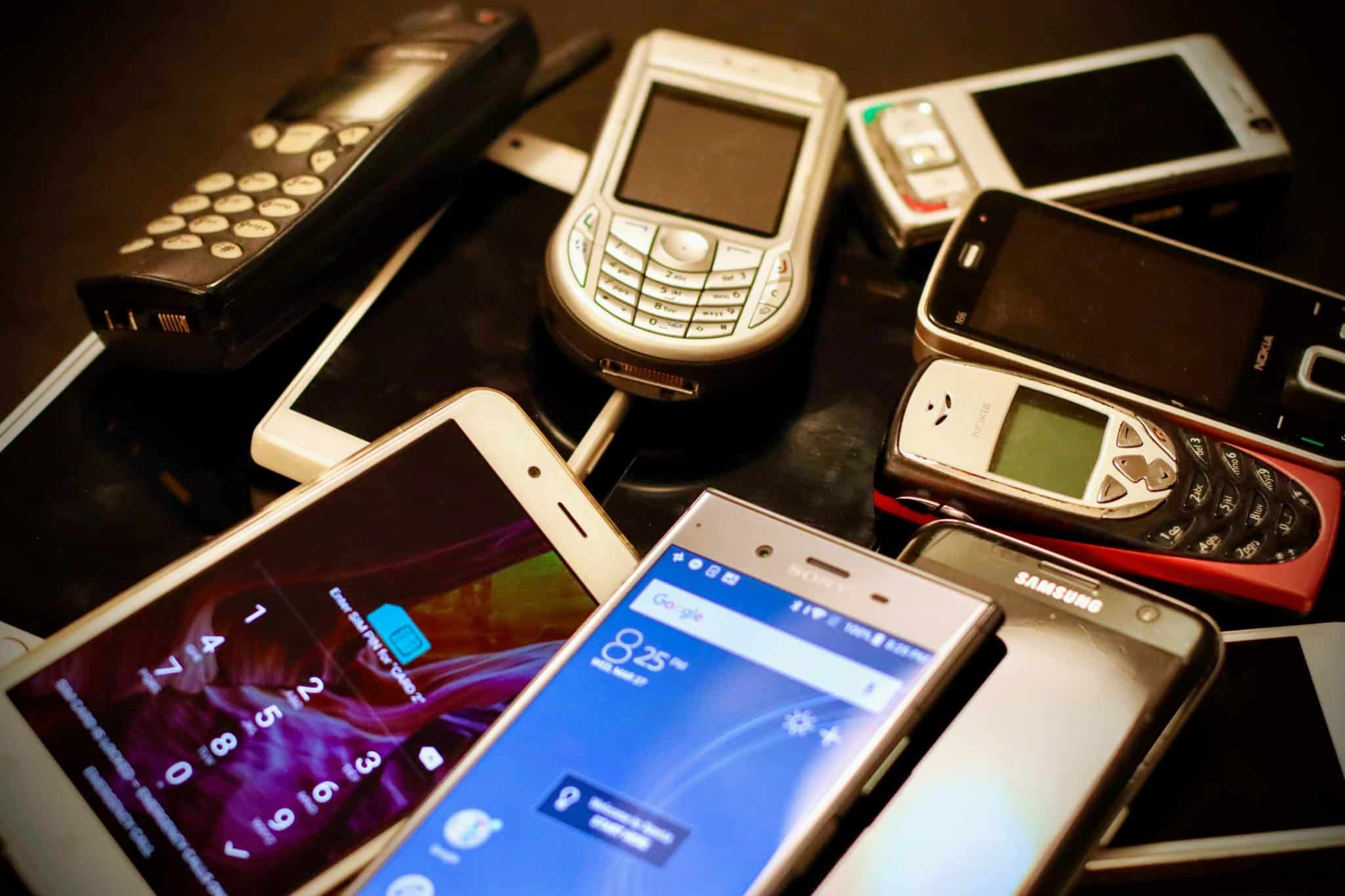How to Leave Work at Work: 5 Actionable Steps for Work-Life Balance

These days, our occupations are critical for keeping our bills paid, mouths fed, and our lives manageable and relatively satisfied. But whether you work outside the home or remotely, there’s always going to be that invisible line where your work stops and your personal life begins. More often than not, the lines between work and life blur. When we bring our challenges home with us or into the other activities we do, it causes a strain on our mental, physical, and emotional health. The strain impacts our attitudes, behaviors, choices, and ultimately relationships—taking us away from living our lives to the fullest.
It all boils down to disconnection. How do we master the art of disconnecting, so that we can reconnect more effectively to the other enriching areas of our lives? Start with awareness and look at how some scenarios may have played out in your own life: Did you have a rough day and take it out on someone in your life? Did you cancel plans to work late? Have you been distracted thinking about work when you should’ve been spending time with someone else?
To live a more productive and fulfilling life, it helps to be fully engaged where you are in the present moment. Taking action to establish boundaries between work and life can help you make incremental changes toward that end. As a first step, learn about how a poor work-life balance is currently affecting you.
Why It’s Important To Be Able To Disconnect from Work
Understanding a little background on the topic is important, for one, the science behind how separating yourself from work isn’t just a physical thing, it’s also mental. More discussion around the topic has been brought to the surface as a result of the COVID-19 pandemic. People were sent home to work remotely or offered extra incentives to do overtime on-site. A culture shift occurred where satisfying the workplace demand for a high level of productivity, even in moments of crisis, is rewarded—with either more money or the convenience of working from home. The term “burnout” came into our workplace vernacular when workplace exhaustion became a new normal for most of society at this point in time.
Burnout has been dubbed a term that has implications not only outside the workplace, but in it. According to the Journal of World Psychiatry, burnout is defined as, “a psychological syndrome emerging as a prolonged response to chronic interpersonal stressors on the job.” Other terms like “Zoom fatigue” have been defined, according to the Journal of Cyberpsychology, Behavior, and Social Networking as a phenomenon that people are now beginning to recognize tiredness, anxiety, or worry resulting from overusing virtual video conferencing platforms. The study found that because humans use complex nuances within their communications, online platforms cause delays and thus a barrier to the brain’s registration of information, meaning we must subconsciously work harder to overcome and restore synchrony. Allowing employees to disconnect and ensure people are taking time offline for themselves is therefore an incredibly essential element of work detachment.
Furthermore, the impact of not being able to disconnect from work-–whether physically or mentally—is detrimental to all areas of our health.

Tips for Leaving Work at Work
Action precedes motivation, as the saying goes. Simply put—make an effort and take action in various areas of your life in order to drive change, even if it’s uncomfortable or feels difficult at first. These recommendations are going to be simple, but not easy. See if any of these seem achievable.
Establish Your Working Hours
Say, your working hours are from 9 AM to 5 PM, Monday to Friday. During these times, you are fully available and responsive, ensuring all tasks and communications are handled within this window. To maintain a healthy work-life balance, make sure your boss, colleagues, and clients (anyone who you routinely work with) understand not to expect responses or work from you beyond this timeframe. By adhering to this schedule, you and your team can work more effectively and respect each other’s personal time. There are, of course, exceptions to this rule, but make them just that, not the norm.
Try Not To Focus on Work Outside of Work
This one can be hard, especially since work takes up such a large portion of your life and time, but limiting talking and thinking about work outside of work can help you establish that much-needed mental boundary between work and life. Mastering this might be the most important step toward improving your well-being. By structuring your day to adhere strictly to your working hours, you can create a clear distinction that allows you to focus on personal time and self-care once the workday ends. Realize at what points in your life you’re thinking of work outside of work and start there.
Learn to Say No
You will face moments in your personal life where the thought of work will creep in. Once you realize you have the power (and permission) to set boundaries, try declining the opportunity to work or even think about work after hours. The most successful people in the world have this tactic mastered and understand that they’re going to disappoint people. If you’re asked to do work that doesn’t cause direct, significant harm to your own employment, then saying, “no” and “it can wait” are acceptable responses. The bigger challenge might not be saying no to others, but rather your own voice in your head.
Get Outside & Get Active
One way to transition from work mode to life mode is to include some activity or a ritual. Sometimes it’s as easy as getting in your car, listening to some great music, and driving home. Put something between work and life (literally) that creates some space, some distance, or a change of atmosphere to prepare your brain for a segue.
Reduce Distractions at Work
Sometimes you might work outside of standard working hours to make up for lost time at work. By limiting distractions with an app blocker like Freedom, you can spend more focused time at work, helping you finish tasks on time. In demanding work environments, it’s common to get pulled in many directions, making it hard to complete work during regular hours. While pre-9 AM or post-5 PM might seem like the easiest times to be productive, relying on these hours can be damaging to your well-being in the long run. By managing distractions and staying focused during your designated working hours, you can improve productivity and maintain a healthier work-life balance.

Benefits of Disconnecting From Work
Disconnecting from work is like a mental exercise—it’s something you have to practice regularly, or else you’ll fall into the same cycle. Any practice, whether it be a medical practice or yoga practice, requires adherence to some parameters and regular check-ins to set the stage for continued growth. The results are worth the effort, especially in this category.
Improved Mental Health
Your work brain (or body) actively concentrates on details and scrutinizes challenges. Compartmentalizing in a healthy way can reduce stress and prevent burnout. By ensuring that work doesn’t encroach on personal time, you can enjoy periods of rest and relaxation, which are crucial for maintaining mental (and physical) health.
Increased Productivity
When you have a window of time to complete something, it’s easier to buckle down, get to work, and limit distractions. Use working hours to your full advantage to be efficient and productive. This structured approach allows you to complete tasks more effectively and frees up personal time, avoiding the need to work late into the evening.
Better Relationships
Separating work from personal life ensures you have quality time to spend with the people in your life you engage with on a regular basis, especially the people who love and care about you. This dedicated personal time strengthens relationships and provides emotional support, which is essential for a fulfilling life.
Enhanced Creativity
Taking time away from work allows you to engage in hobbies and personal interests, which can foster creativity. This break from professional responsibilities allows new people, places, and things to come into your life and inspire you to try something new or initiate a much-needed change.
Greater Job Satisfaction
Creating a clear boundary between work and personal time can make work more enjoyable. Knowing that you have protected time for yourself can increase your overall satisfaction with your job, as it feels less intrusive and more balanced. Happy workers are far more pleasant and positive on the job than disgruntled workers.
Maintaining a clear division between work and personal life promotes overall well-being. It allows for a more satisfying and balanced life, where you can enjoy personal activities without the constant pressure of work-related tasks. Start with a simple step: limiting distractions. Freedom is an app blocker that allows you to focus free of distractions and help you manage your screen time. Start your free trial and see the difference it makes in your work-life balance! It’s one step in the direction of happier, healthier, and more productive lives.


